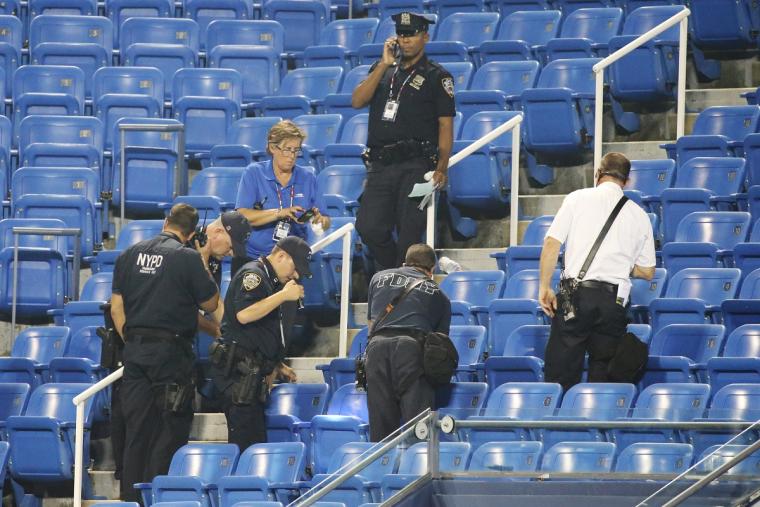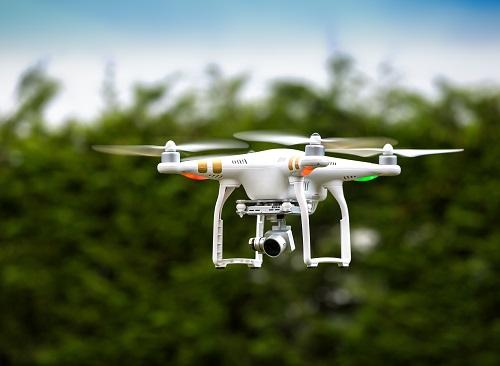
In 2015, the New York Police Department was called in to investigate an incident involving a drone that crashed into the grandstand during a match at US Open in 2015, alarming both spectators and athletes.
The problems between those who fly unmanned aerial vehicles (UAVs, also known as drones) and those who own venues and sports events came into sharp focus when a man was charged after allegedly sending a drone over Ohio Stadium during the recent Ohio State-Maryland football game.
Many venues, including Ohio State’s, have temporary flight restrictions (backed up by the FAA) that are put in place. According to the local CBS affiliate, the FAA sets the restriction for one hour before kickoff, throughout the game and one hour after the game ends.
When the drone was spotted above the game space, play was halted, athletes were moved to the sidelines and Columbus police officers from the counterterrorism unit were notified. The operator of the UAV, Rigoberto Canaca Escoto, was charged with unsafe operation of aircraft, prohibited acts, inducing panic and disorderly conduct. Canaca Escoto admitted he did not possess an FAA-granted DRONE TRUST certificate, did not possess any piloting knowledge, and that he had lost control of the drone when it went over the stadium.
The concern has continued; an article in Athletic Business notes that officials have become concerned about the fact that while this was an innocuous incident, it could have been far worse.
“We’re concerned about somebody who would use (drones) in a nefarious way and drop a grenade that would do considerable damage and possibly kill individuals,” said Sen. Gary Peters (D-Mich.), who chairs the Committee on Homeland Security and Governmental Affairs, according to NBC News.
 The recent college game is not the only place where UAVs have interfered with sports, or where countermeasures are being taken. The ramifications for the sports world also continue to evolve. Drones have been viewed as a threat and a distraction (as evidenced by the time one flew over the Super Bowl, causing panic) to the time one flew into an MLB ballpark in 2022, to the unauthorized presence of one at the U.S. Open in New York in 2014). And, of course, there were fears that drones could be used as spy mechanisms so that rival teams could learn about opponents in advance of competition.
The recent college game is not the only place where UAVs have interfered with sports, or where countermeasures are being taken. The ramifications for the sports world also continue to evolve. Drones have been viewed as a threat and a distraction (as evidenced by the time one flew over the Super Bowl, causing panic) to the time one flew into an MLB ballpark in 2022, to the unauthorized presence of one at the U.S. Open in New York in 2014). And, of course, there were fears that drones could be used as spy mechanisms so that rival teams could learn about opponents in advance of competition.
And that’s just a handful of the problems. Unfortunately, the increasing presence of drones (which can be purchased just about anywhere these days), combined with too little knowledge of the rules and certifications needed to fly them, have led some to create their own countermeasures, included self-appointed “drone slayers” (generally those armed with guns, and who may or may not have professional training). It doesn’t help that magazines like Popular Mechanics include articles on how to do it.
The problem, some experts say, is that an increasingly worried public could take aim erroneously and cause harm to others. After all, UAVs can also be an asset, since they can help coaches record and view from overhead action ranging from football formations to choreography of marching bands and drum lines, to legitimate media outlets following skiers and snowboarders down an outdoor course during a competition.
The burgeoning drone marketplace has resulted in the FAA creating a specific landing page on its site dealing with UAVs, whether drone operators are what is termed Recreational Flyers requiring the TRUST Certificate (for those using the drone for personal enjoyment or as an educational institution), or Certificated Remote Pilot (necessitating the more involved Remote Pilot Certificate, something more applicable to those flying a UAV for commercial, government, or any other non-recreational purposes).
As the issue continues to evolve, the sports industry can expect to see increasing regulation.
In the meantime, though it was not a drone, we’ll always have the humor from that balloon.

